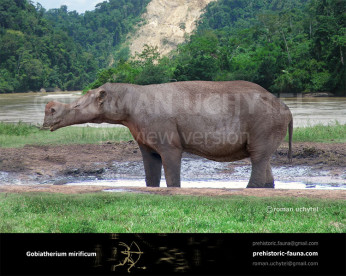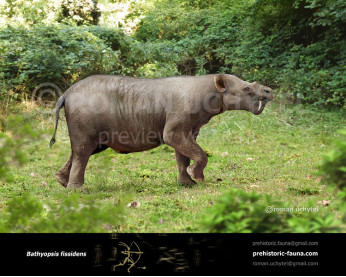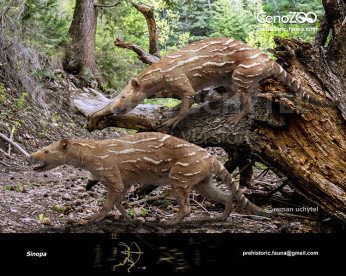Uintatherium
5454Uintatherium (Uintatherium Leidy, 1872)
Order: Dinocerata
Family: Uintatheriidae
Genus: Uintatherium
Dimensions: length - 3,8 m, height - 150 - 200 сm, weight - 2000 kg
Temporal range: Eocene of North America
Uintatherium, is an extinct genus of herbivorous mammal that lived during the Eocene epoch, which includes a single species currently recognized, U. anceps. With a length of about 4 m long, 1.70 m tall and a weight up to 2.25 tons, they were similar to today's rhinoceros both in size and in shape, although they are not closely related. Fossils have been found in both Wyoming and in Utah near the Uinta Mountains, to which the animal owes its name. It appeared in the early Eocene 52 million years ago and lived in the region that is now the American Southwest.
The large upper canines might have acted as formidable defensive weapons, and superficially resembled the canines of saber-toothed cats. Sexually dimorphic, the teeth were larger in males than in females. However they also might have used them to pluck the aquatic plants from marshes that seem to have comprised their diet.
The skulls of the males bore six prominent knob-like ossicones which grew from the frontal region of the skull. The function of these structures is unknown. They may have been of use in defense and/or sexual display. Uintatherium went extinct about 37 million years ago, presumably due to climate change and competition with perissodactyls such as brontotheres and rhinos.
Uintatherium (Uintatherium Leidy, 1872)
Order: Dinocerata
Family: Uintatheriidae
Genus: Uintatherium
Dimensions: length - 3,8 m, height - 150 - 200 сm, weight - 2000 kg
Temporal range: Eocene of North America
Uintatherium, is an extinct genus of herbivorous mammal that lived during the Eocene epoch, which includes a single species currently recognized, U. anceps. With a length of about 4 m long, 1.70 m tall and a weight up to 2.25 tons, they were similar to today's rhinoceros both in size and in shape, although they are not closely related. Fossils have been found in both Wyoming and in Utah near the Uinta Mountains, to which the animal owes its name. It appeared in the early Eocene 52 million years ago and lived in the region that is now the American Southwest.
The large upper canines might have acted as formidable defensive weapons, and superficially resembled the canines of saber-toothed cats. Sexually dimorphic, the teeth were larger in males than in females. However they also might have used them to pluck the aquatic plants from marshes that seem to have comprised their diet.
The skulls of the males bore six prominent knob-like ossicones which grew from the frontal region of the skull. The function of these structures is unknown. They may have been of use in defense and/or sexual display. Uintatherium went extinct about 37 million years ago, presumably due to climate change and competition with perissodactyls such as brontotheres and rhinos.

-797x638.jpg)
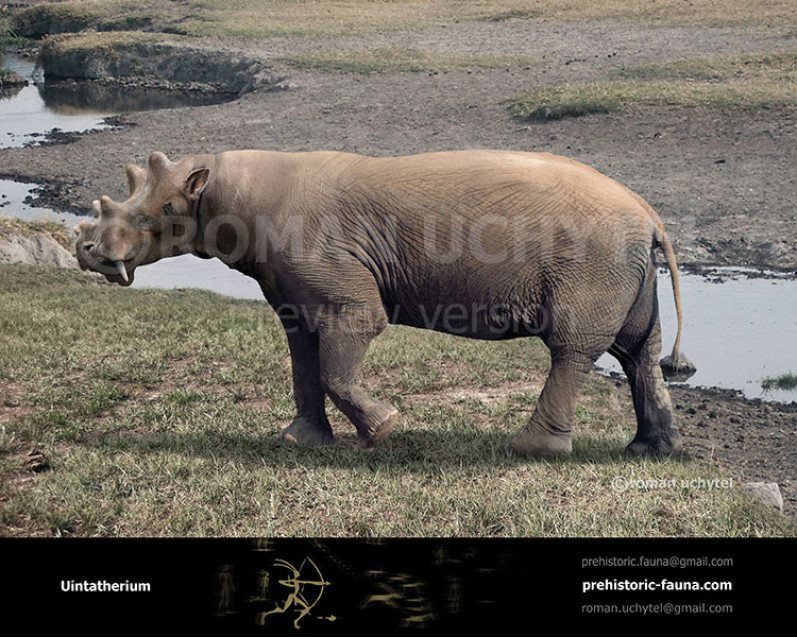
-797x638.jpg)
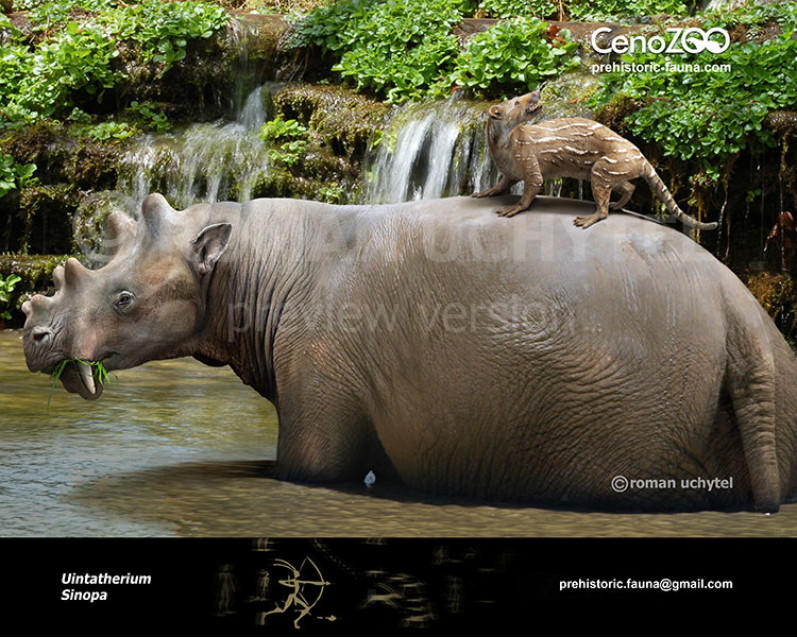
-70x56.jpg)

-70x56.jpg)

-346x277.jpg)

